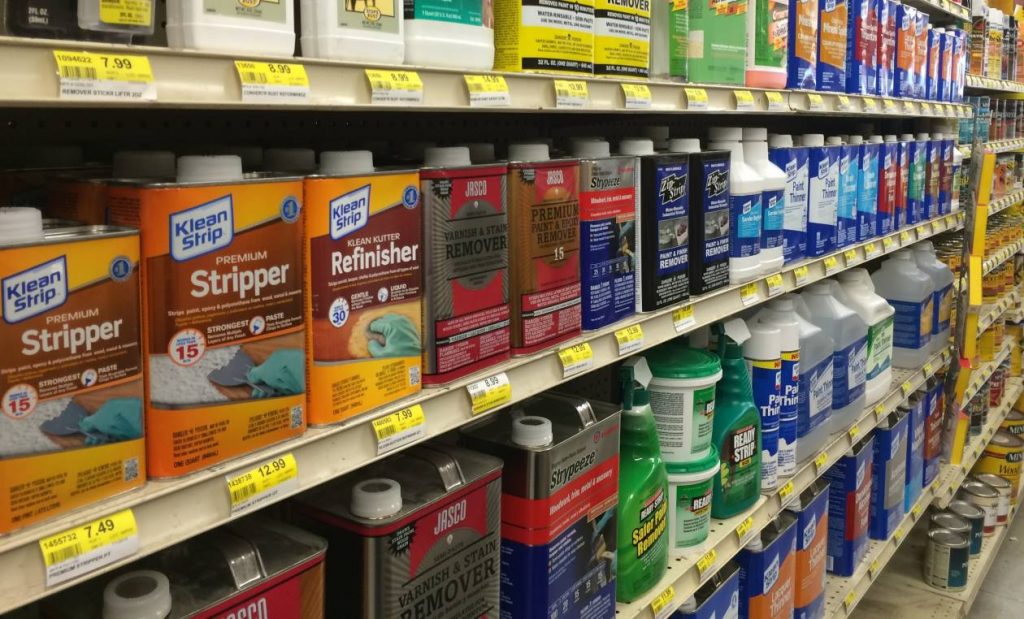Introduction
After decades of death and regulatory inaction, the federal government announced a rule Friday that will ban retail sales of paint-removal products with an ingredient that has killed unsuspecting people as they used it on bathtubs, floors, furniture and other items.
The U.S. Environmental Protection Agency regulation targets paint strippers containing a chemical called methylene chloride.
But the ban on consumer sales backs away from broader restrictions proposed during the final days of the Obama administration, which would have blocked sales of the product to almost all workplaces as well.

Safety advocates said the government’s pullback puts lives at risk. The vast majority of deaths linked to methylene chloride have happened on the job, as a 2015 Center for Public Integrity investigation showed. The investigation found at least 56 deaths in the United States since 1980 that were linked to methylene chloride, particularly in paint strippers, and only a few involved consumers.
“The EPA is supposed to be protecting us, and they are not,” said Wendy Hartley, whose 21-year-old son, Kevin, died on the job in April 2017 while using a paint stripper to refinish a bathtub.
The EPA’s assistant administrator for chemical safety, Alexandra Dunn, said Friday that the agency was proud of its action “to ensure that no other family experiences the death of someone close to them from this chemical.”
Dunn said officials could decide later to ban the use of methylene chloride paint strippers in work settings. But for now, she said, the agency is requesting comments on a possible rule to require training and certification instead.
Kevin Hartley received training, his mother said. It didn’t help. Wendy Hartley is among those suing the EPA to get it to enact the wider ban it originally considered.
The agency, which under the Trump administration has focused on rolling back rules, almost didn’t act at all — even on behalf of consumers. In December 2017, at the end of a year in which at least three people died using methylene chloride paint strippers, the agency indicated that it was indefinitely delaying restrictions. Two months after that came yet another death.
Getting even the partial ban took sustained pressure from families of three of the four recent victims, chemical-safety groups and, increasingly, both Democratic and Republican members of Congress.
“It took a lot to get here,” said Brian Wynne, whose 31-year-old brother, Drew, died in October 2017 while removing paint from his business’ walk-in freezer. “I don’t think this is a celebration, but I think this is an acknowledgement of accomplishing a once-impossible task.”
Methylene chloride poses a variety of health risks. But in enclosed areas like bathrooms, it can be immediately dangerous. As the fumes build up, they can kill by asphyxiation or by triggering a heart attack.
The chemical, also called dichloromethane, has struck down teenagers on the job, an Iraq War veteran working on a church baptismal pool and a mother of four, among others.
Along the way, regulators missed multiple opportunities to save lives.
Researchers warned of these dangers at least as far back as 1976. In 2012, after a study showing a rash of methylene chloride deaths among bathtub refinishers, the Consumer Product Safety Commission declined to act despite requests from California and Washington state officials for stiffer rules. That year, EPA decided that it would take a close look at the chemical. But it wasn’t until January 2017 that the agency proposed to largely ban methylene chloride in paint strippers.
Then the EPA essentially shelved the rule.
But people kept dying. Joshua Atkins, 31, succumbed in February 2018 while refinishing a section of his BMX bike, 13 months after the EPA proposed to make it impossible for most people to get their hands on the product he bought.
He was visiting his mother at the time, and Lauren Atkins found him slumped in her bathtub, where he seemed to have moved the project to avoid making a mess. She thought at first that he was simply asleep. Then she learned the truth — and found out about the EPA’s delays.
“If they had done what they were supposed to do back then,” she said, “my son would still be here.”
The EPA’s consumer ban will not take effect quickly: Retailers won’t have to stop selling the products for about eight months. But many major retail chains have already pulled them from shelves or committed to doing so, reacting more quickly to the appeals from victims’ families than the EPA did.
Wynne, whose brother died, said the families aren’t giving up. Pressure on the EPA from other parts of the government limited what the agency could do, in his opinion. But people and their elected officials can keep ratcheting up the pressure, too, he said.
“I hope we’ve opened the doors for additional action,” he said.
Read more in Inequality, Opportunity and Poverty
Unequal Risk
Some paint strippers are killing people. The EPA promised to act — but hasn’t.
For now, the only ones yanking methylene chloride paint removers off the shelves are retailers.





Join the conversation
Show Comments